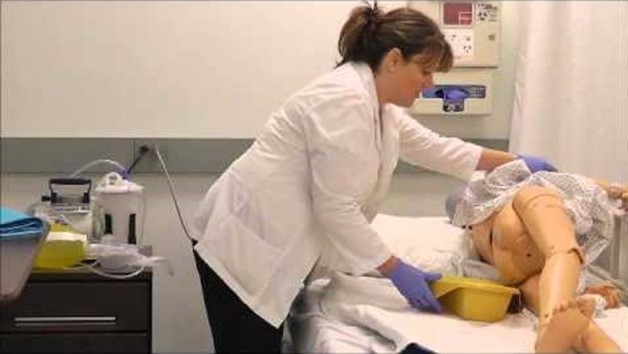A nurse is discussing the stages of general adaptation syndrome with a newly licensed nurse.
The nurse should identify that which of the following manifestations occurs during the alarm reaction stage.
Depression.
Dilated pupils.
Bradycardia.
Physical exhaustion.
The Correct Answer is B
This is because during the alarm reaction stage of general adaptation syndrome, which is also known as the fight-or-flight response, the sympathetic nervous system is activated by the sudden release of hormones.
This hormone release causes physical symptoms such as dilated pupils.
Choice A is wrong because depression is not a manifestation that occurs during the alarm reaction stage of general adaptation syndrome.
Choice C is wrong because bradycardia, or a slow heart rate, is not a manifestation that occurs during the alarm reaction stage of general adaptation syndrome.
Instead, an increase in heart rate is a common physical sign during this stage.
Choice D is wrong because physical exhaustion is not a manifestation that occurs during the alarm reaction stage of general adaptation syndrome.
Physical exhaustion occurs during the final stage of general adaptation syndrome, which is known as the exhaustion stage.
Nursing Test Bank
Naxlex Comprehensive Predictor Exams
Related Questions
Correct Answer is B
Explanation
The nurse’s entry “New dressing applied as prescribed; no drainage on old dressing” demonstrates correct documentation because it includes specific details about the wound and the dressing change.
Choice A is wrong because it does not provide specific details about the wound or the dressing change.
Choice C is wrong because it includes subjective language (“seems” and “does not appear”) rather than objective observations.
Choice D is wrong because it only documents medication administration and does not provide any information about the wound or the dressing change.
Correct Answer is A
Explanation
This statement indicates that the nurse should properly position the fracture bedpan to facilitate its use.
The shallow end of the fracture bedpan should be placed under the client’s buttocks to provide support and comfort.

Choice B is wrong because hyperextending the client’s back can cause discomfort and may not facilitate the use of the fracture bedpan.
Choice C is wrong because it is not necessary for the client to try to defecate for 20 minutes while on the fracture bedpan.
Choice D is wrong because keeping the bed flat may not provide the most comfortable position for the client while using the fracture bedpan.
Whether you are a student looking to ace your exams or a practicing nurse seeking to enhance your expertise , our nursing education contents will empower you with the confidence and competence to make a difference in the lives of patients and become a respected leader in the healthcare field.
Visit Naxlex, invest in your future and unlock endless possibilities with our unparalleled nursing education contents today
Report Wrong Answer on the Current Question
Do you disagree with the answer? If yes, what is your expected answer? Explain.
Kindly be descriptive with the issue you are facing.
